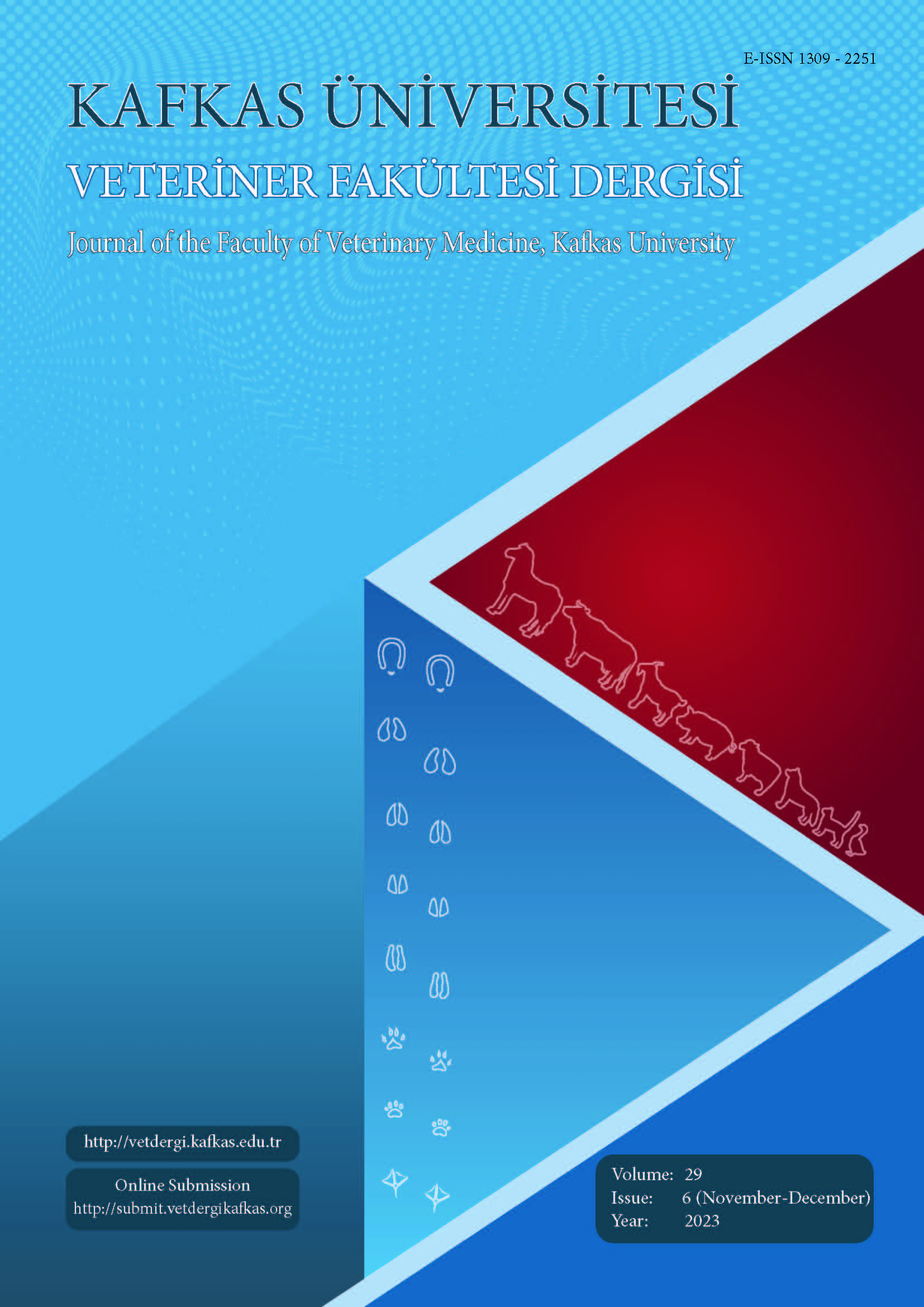
This journal is licensed under a Creative Commons Attribution-NonCommercial 4.0 International License
Kafkas Üniversitesi Veteriner Fakültesi Dergisi
2023 , Vol 29 , Issue 6
Ixodid Ticks (Ixodoidea: Ixodidae) Infesting Wild Animals in Hatay, Türkiye
1Hatay Mustafa Kemal University, Faculty of Veterinary Medicine, Department of Parasitology, TR-31001 Hatay - TÜRKİYE2Hatay Mustafa Kemal University, Faculty of Veterinary Medicine, Department of Surgery, TR-31001 Hatay - TÜRKİYE
3Ankara University, Faculty of Veterinary Medicine, Department of Parasitology, Ticks and Tick-Borne Diseases Research Laboratory, TR-06070 Ankara - TÜRKİYE DOI : 10.9775/kvfd.2023.30132 Wild animals play an important role as amplifiers and/or reservoir hosts in the ecology of many ticks and tick-borne pathogens affecting livestock and humans. In this study, which was carried out in the Hatay province, the southernmost region of Anatolia, a total of 362 (210♀, 146 ♂, 6N) tick specimens were collected from 18 wild animals from 7 species, including white stork (Ciconia ciconia) (n = 1), roe deer (Capreolus capreolus) (n = 5), badger (Meles meles) (n = 2), jackal (Canis aureus) (n = 3), red fox (Vulpes vulpes) (n = 5), hare (Lepus europaeus) (n = 1), and wild goat (Capra aegagrus) (n = 1), which were obtained between 2014 and 2022. The collected ticks were identified according to morphological criteria at the level of species as Amblyomma lepidum, Dermacentor marginatus, Haemaphysalis erinacei, Haemaphysalis inermis, Haemaphysalis kopetdaghica, Ixodes gibbosus, Ixodes kaiseri, Ixodes ricinus, Rhipicephalus kohlsi, Rhipicephalus rossicus, and Rhipicephalus turanicus. With this study, A. lepidum was reported for the first time in Türkiye, while R. rossicus detected in roe deer was reported for the first time in wild animals, and the lesser-known/rare tick H. kopetdaghica was reported for the second time in wild goats where it was previously reported. Keywords : Amblyomma lepidum, Haemaphysalis kopetdaghica, Rhipicephalus rossicus, Tick, Türkiye, Wild animals










